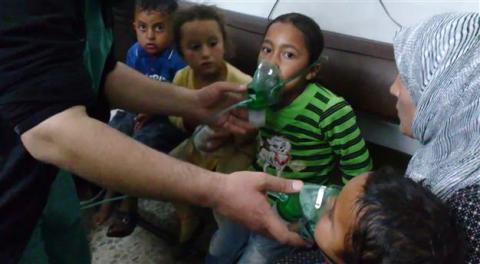Watchdog confirms 'systematic' chlorine attacks in Syria

The world's chemical watchdog on Sept. 10 confirmed the "systematic" use of chlorine as a weapon in Syria, according to a report by its team investigating alleged attacks there.
The fact-finding mission established "compelling confirmation" that a toxic chemical was used "systematically and repeatedly" as a weapon in villages in northern Syria earlier this year, the Organisation for the Prohibition of Chemical Weapons (OPCW) said in a statement.
"The descriptions, physical properties, behaviour of the gas, and signs and symptoms resulting from exposure, as well as the response of patients to the treatment, leads the mission to conclude with a high degree of confidence that chlorine, either pure or in mixture, is the toxic chemical in question."
The OPCW said that reports of chlorine attacks in Syria dropped off after the fact-finding mission was established in April, "but there was a spate of new allegations in August." Spokesman Michael Luhan said the new claims would be investigated.
The fact-finding mission's initial report in June said that evidence 'lends credence' to the view that chlorine had been used in attacks in the villages of Talmanes, Al-Tamana and Kafr Zeita.
President Bashar al-Assad's regime and rebels have both accused the other of using chemical agents, including chlorine, in the bloody uprising that began in March 2011 and in spite of Damascus promising to hand over all its chemical arms.
The OPCW team probing the allegations was attacked with a roadside bomb and gunfire in May, preventing them accessing the site of an alleged attack in the village of Kafr Zeita.
Despite not gaining access, the team interviewed victims, doctors and eyewitnesses about the attacks, and analysed...
- Log in to post comments










